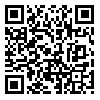Sun, Jul 27, 2025
[Archive]
Volume 8, Issue 17 (2015)
JMED 2015, 8(17): 113-121 |
Back to browse issues page
Download citation:
BibTeX | RIS | EndNote | Medlars | ProCite | Reference Manager | RefWorks
Send citation to:



BibTeX | RIS | EndNote | Medlars | ProCite | Reference Manager | RefWorks
Send citation to:
Yamani N, Jafae R, Karimi H, Erajpour A, Jarahi L. Medical, nursing and radiology students Readiness for Interprofessional Education in Mashhad University of Medical Sciences. JMED 2015; 8 (17) :113-121
URL: http://edujournal.zums.ac.ir/article-1-368-en.html
URL: http://edujournal.zums.ac.ir/article-1-368-en.html
1- , KarimiH@mums.ac.ir
Abstract: (25166 Views)
Introduction: In modern models of learning, learner’s readiness is so important that its importance has been emphasized for active participation and self-motivation of learners. Because it plays an important role in learning. Interprofessional education is one of the new models with enhanced cooperation, quality of services and improves patient care. This study aimed to assess readiness of medical, nursing and radiology students of Mashhad University of Medical Sciences for interprofessional learning as well as examine its correlation with some demographic variables. Methods: this was a cross-sectional descriptive study in 2013-2014.Samples were recruited through convenience sampling method from of medical, nursing and radiology students of Mashhad University of Medical Sciences. Data were gathered through the Readiness for Inter Professional Learning Scale (RIPLS). Results: 330 students filled the questionnaires among which 305 questionnaires were subjected to analysis. They were recruited from nursing, radiology and medicine. The mean score for nursing discipline was 72/19, for radiology was 72/84 and for medicine was 68/45. Also the standard deviation of students’ scores, respectively, was 36/9, 86/7 and 85/9. There were no significant correlation between readiness for interprofessional readiness and contextual variables consisted of gender and discipline. There is a significant correlation between interprofessional readiness of students in mediine and radiology and variable consisted of age, but this wasn’t in nursing students. Conclusion: Regarding the acceptable (higher than mean score) students’ readiness, and Insignificant relationship between the students’ readiness and contextual variables, Educational planners and managers have an opportunity to take steps to the development of interprofessional education with Fewer restrictions and by considering the other factors.
Article Type : Orginal Research |
Subject:
Medical Education
Received: 2014/07/29 | Accepted: 2014/10/1 | Published: 2015/03/17
Received: 2014/07/29 | Accepted: 2014/10/1 | Published: 2015/03/17
Send email to the article author
| Rights and permissions | |
 |
This work is licensed under a Creative Commons Attribution-NonCommercial 4.0 International License. |





